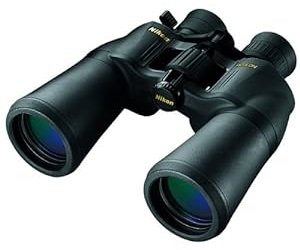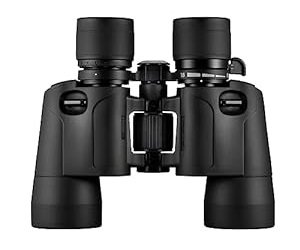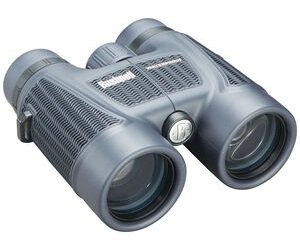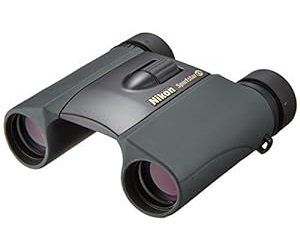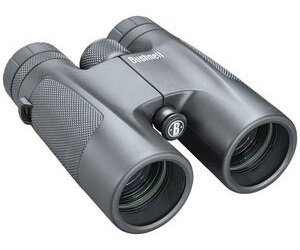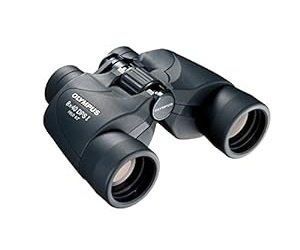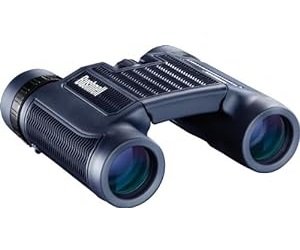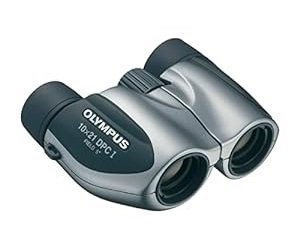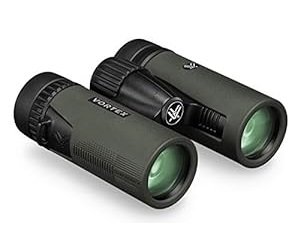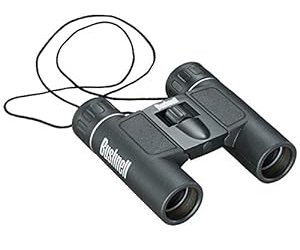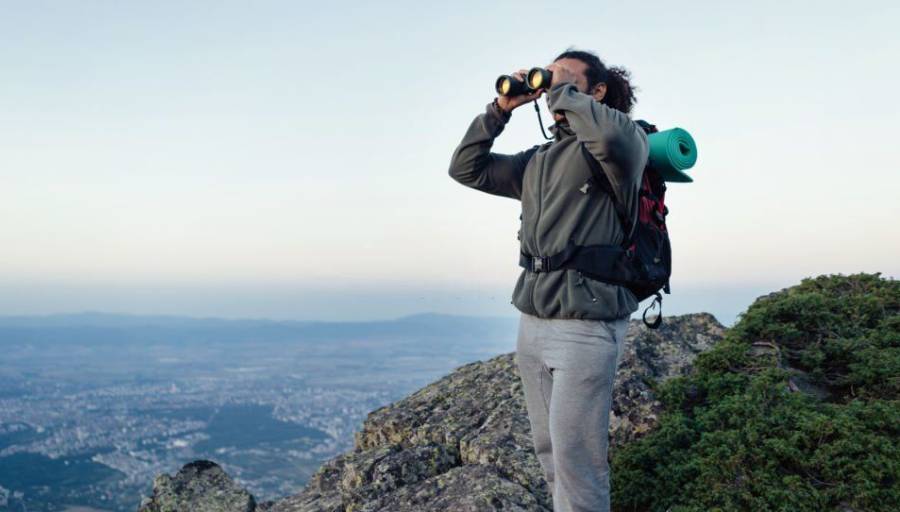
Hiking is a fantastic way to get out in nature, breathe some fresh air, and experience scenic beauty. But what if you could see those distant landscapes or wildlife in even more detail? That’s where binoculars come in!
Binoculars are a must-have for any hiker who wants to get the most out of their outdoor adventures. They allow you to observe things that would be too far away to see with the naked eye, like spotting a majestic bald eagle soaring high above or getting a closer look at a curious deer in the distance.
With so many different binoculars on the market, it can be tough to decide which pair is right for you. But don’t worry, we’re here to help! After evaluating over twenty models, we have curated a list of the top 10 best binoculars for hiking. Each of our recommendations has been thoroughly scrutinized practically. This ensures that you will be able to see fine details from afar and enjoy an overall satisfying viewing experience during your hikes or nature excursions.
Best Binoculars for Hiking in 2024
- Nikon Aculon A211 10-22×50 – Ideal for a Wide Range of Applications
- Olympus 8-16×40 S – Superb Zoom Capabilities Make It Great Value
- Bushnell 150142 Binoculars 10×42 h2o – Brilliant Optical Performance
- Nikon Sportstar EX 10×25 – Compact, Foldable and Waterproof Design
- Bushnell Powerview 10×42 – Affordable and Get Bright, Clear & Crisp View
- Olympus 8×40 DPS-I – Excellent Design, Easy to Use and Hold
- Bushnell Binoculars 10×25 H20 – Combined with Anti-Fog & Waterproof Properties
- Olympus 10×21 DPC-I – High Magnification and Sporty Design
- Vortex Optics Diamondback HD – Smashes the Scale of Price vs Performance
- Bushnell 12×25 131225 – Ideal for Hiking & Outdoor Activities
1. Nikon Aculon A211 10-22×50
Specifications:
- Weight: 961 g
- Prism type: Porro prism
- Lens coating: multi-coated coating
- Actual/perceived field of view at 1000 m: 3.8°/ 66 at 1000 m
- Objective lens diameter: 50 mm
- Exit diameter of pupil: 5 mm
- Magnification (digital zoom): 10 x
- Minimum focusing distance: 15 m
- Optical zoom: 10 to 22x
- Twilight index: 22.4
- Light intensity: 25
- Waterproof: no
- Adaptable tripod: yes
Nikon is famous for its well-designed products and the Aculon A211 10-22×50 binoculars carry on that tradition with their great balance between affordability and high quality. It is designed with durable rubber armor to ensure optimal protection in drops and harsh environments.
Another reason this model takes the very first step in our top 10 is: it is suitable for a wide range of applications. Whether for hiking or bird & wildlife watching, Aculon A211 10-22×50 binoculars are easy enough to pack for the day although they aren’t the lightest on the market.
Nikon has notably provided them with rubber eyecups which keep the binoculars positioned in the right place and promote comfortable wearing over an extended period. We were satisfied with its ergonomic design. This device is built with multi-coated glass lenses with 50mm diameter for a wide and bright field of view.
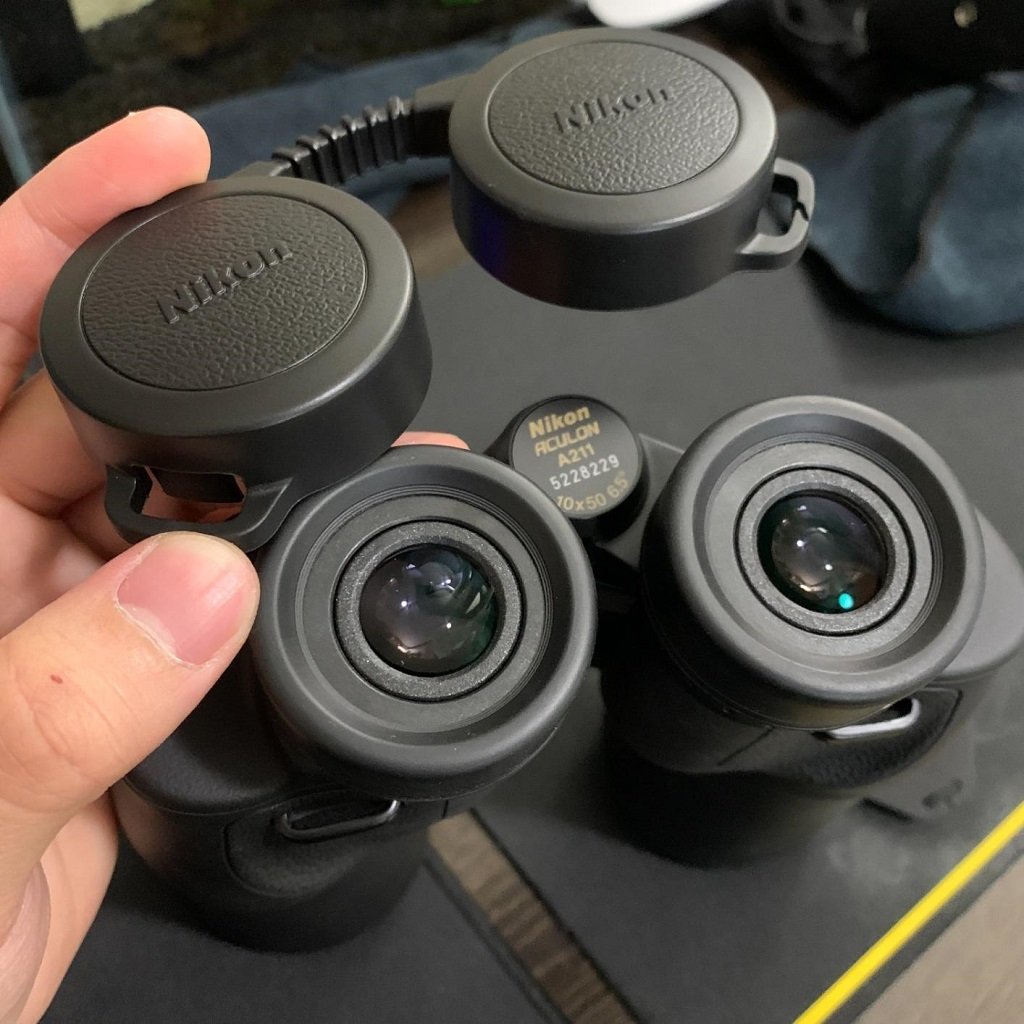
These high-quality optics from Nikon are associated with a 5 mm exit pupil. So with these hardware choices, you can use the Aculon A211 10-22x50s to see distant objects even in low light or at night. Also, their rubberized coating offers a strong grip.
These binoculars include a smoothly rotating focus knob to allow you to quickly and accurately find a clear view of your subject. A convenient zoom control knob at your fingertips allows for swift and effortless adjustment, ranging from 10x to 22x power.
However, long-distance images may appear wavy. Also, this model has average weather resistance, so you should be careful when using it in certain environments.
Pros
- Compatible with a wide range of applications
- Many user-friendly features
- Good manufacturing quality
- Smooth central focus knob
- Turn-and-slide Multi-click rubber eyecups
Cons
- Relatively heavy
- Large
2. Olympus 8-16×40 S Binoculars
Specifications:
- Weight: 795g
- Prism type: Porro prism
- Lens treatment: Coated aspherical lenses
- Actual/perceived field of view at 1000m: Wide angle: 5° – 3.4°/ 87-59m at 1000m
- Lens diameter of objective: 40 mm
- Exit pupil diameter: 5 – 2.5 mm
- Magnification (digital zoom): 8 x
- Minimum focusing distance: 10 m
- Optical zoom: 8 – 16x
- Twilight factor: 25.3
- Light intensity: 6.25
- Waterproof: no
- Adaptable tripod: yes
At this price range, it’s hard to find a better option than the Olympus 8-16×40 S. These binoculars have been available for a while now but continue to impress with their affordable price. They offer higher magnification (8 – 16x) and have a Porro Prism design, which combined with its aspherical lenses provides a clear image even in low light conditions.
It features an excellent build quality in line with Olympus binoculars. This model includes all basic features with high-end coatings and interchangeable lenses, resulting in minimal distortion and aberrations. So you can be sure to enjoy an enjoyable viewing experience overall.
We particularly like the Olympus 8-16×40 S for its superb zoom capabilities and massive field of view of 143 meters at 1000 meters (one of the best on the market). Also, this model offers a close focus of 10 meters. These features ensure you will get a glimpse of nature at its best.
The good news is that you have at your disposal a series of tools that promote clear and detailed visualization in different conditions. The large central rotary knob allows rapid adjustments of the focus during use. Likewise, these binoculars include a built-in diopter correction adjuster for manual focus adjustment for each eye, depending on your sight needs.
Other features notable features are it is safe and very comfortable to use. With strong rubber armor, they offer resistance to potential shocks while hiking, and feature a textured grip to ensure a firm grip. Finally, the Olympus 8-16×40 S is compatible with most standard tripods.
Pros
- Portable and lightweight
- Construction with solid rubber
- Aspherical and multicoated lenses
- Wide field of vision
- Good value for the money
Cons
- Heavyweight
3. Bushnell 150142 Binoculars 10×42 H2o
Specifications:
- Weight: 709g
- Prism type: Bak-4 roof prism
- Lens coating: Multi-coated anti-reflective coating
- Actual/perceived field of view at 1000m: 5.9°/ 115 at 1000m
- Objective lens diameter: 42mm
- Diameter pupil exit distance: 4.2mm
- Magnification (digital zoom): 10
- Minimum focusing distance: 3.6 m
- Optical zoom: 10 x
- Twilight factor: 20.5
- Light intensity: 17.64
- Waterproof: yes
- Suitable for tripod: yes
The Bushnell H2O series is known for offering good optical performance and this model is no exception. For an affordable price, the Bushnell H2o 10×42 provides sharp images with high contrast and a satisfying viewing experience at dusk. Above all, their waterproof and solid design is resistant to the most difficult conditions of use.
This model is designed with a non-slip rubber that can absorb shock while ensuring a secure grip and handling. The O-ring sealed and nitrogen purged mean they are fog-free and condensation-free moisture and mold.
The robustness of their design gives them adequate protection if they accidentally fall from heights that are not too high. These are combined with the Bak-4 roof prism-type design, allowing good light transmission and guaranteeing satisfactory twilight performance.
Despite the relative heaviness – a weight of 709 g on the scale, the Bushnell H2o binocular is comfortable to handle and use. This is largely made possible by their textured rubber exterior, making it easy to grip whether you have wet hands or are wearing gloves.
As for the performance itself, it’s on the whole satisfactory although phase-correction coated primes would have resulted in improved resolution and contrast. That said, it’s not fair to complain about it given the affordable price and the choices of optical components operated by Bushnell: large objective lens diameter (42 mm), glass lenses multi-layered…

Twisted eyecups provide longer eye relief for wearers of glasses or contact lenses, as well as. the good placement of controls is another feature that makes the Bushnell 150 142 10×42 h2o user-friendly.
This model features 10x magnification and a 102m field of view at a distance of 1000m so distant subjects appear close enough. If you need a final argument to definitely choose these binoculars, you’ll be happy to know that they come with a strap and a carrying case.
Pros
- An anti-reflective multi-coated lens system
- High-transmission BAK4 prism
- 100% waterproof and fog-proof design
- Special anti-shock rubber armor
- Satisfactory optical performance, including at dusk
- Comfortable and easy to handle
Cons
- Resolution and contrast could have been better with phase correction coated prisms
- Doesn’t come with strap
4. Nikon Sportstar EX 10×25
Specifications:
- Weight: 300 g
- Prism type: roof prism
- Lens coating: multi-coated coating
- Actual/perceived field of view at 1000 m: 6.5°/ 114 at 1000 m
- Objective lens diameter: 25 mm
- Exit diameter of pupil: 2.5mm
- Magnification (digital zoom): 10x
- Minimum focusing distance: 3.5m
- Optical zoom: 10x
- Twilight factor: 15.8
- Light intensity: 6.25
- Waterproof: yes
- Suitable for tripod: no
If you’re looking for hiking binoculars that are comfortable, durable, and offer both a wide field of view and close focusing, the Nikon Sportstar EX 10×25 might be all you need. We highly recommend this model primarily for its versatility, making it well-suited for use in both indoor and outdoor settings.
This model is usable whatever the weather conditions. It can withstand immersion in 2 meters of water, for up to 5 minutes. Their anti-fog design with the use of nitrogen and O-ring seals prevents fog from forming inside the lens and dirt/dust from accumulating there.
Sportstar EX 10×25 binoculars adopt a compact and lightweight format, which makes them suitable for everyday use. After use, you can fold them up and put them in your pocket for quick and easy transport. So you do not necessarily need to provide a special case for these binoculars.
Nikon has truly excelled in ensuring that the Sportstar EX provides a remarkably comfortable user experience. For this purpose, they are covered with rubber armor to give you the firmest possible grip even in bad weather. Also, their central focus wheel has a studied positioning for quick use and smooth adjustments.
Apart from water sports, these foldable binoculars are designed for nature observation, camping, theater or concerts. They bring subjects closer to you thanks to the 10x magnification. The 25mm objective lens diameter ensures efficient observation while remaining modest in size.
The multi-coated lens treatment lets in more light to provide a brighter and sharper field of vision. However, there is a slight creaking noise when pressure is applied to the center housing that encases the hinges.
Pros
- Compact and foldable
- Waterproof up to 2 meters of water
- Brighter, sharper field of vision
- Comfortable to handle and use
Cons
- No tripod adapter
- Poor eyecaps
5. Bushnell Powerview 10×42
Specifications:
- Weight: 670g
- Prism type: Bak-7 glass roof prism
- Lens coating: Multi-coated coating
- Actual/perceived field of view at 1000m: 5.7°/ 98 at 1000m
- Objective lens diameter: 42mm
- Pupil exit diameter: 4.2 mm
- Magnification (digital zoom): 8
- Minimum focusing distance: 7 m
- Optical zoom: 10x
- Twilight index: 17.64
- Light intensity: 17.64
- Waterproof: no
- Suitable for tripod: yes
If you’re looking for a mid-range pair of hiking binoculars with high magnification capabilities, don’t pass up the Bushnell Powerview 10×42. For an affordable price, they offer everything you need for low-light vision and the comfort of use.
Their characteristics and functions have been studied to lend themselves to a wide variety of uses: observation of birds, wildlife, landscapes, or even the ocean, sports activities, shows, etc.
It has a 42mm objective diameter, which allows for excellent daylight and low light viewing. Their multi-coated lenses sport a special coating to reduce light reflection and deliver bright images. We also appreciate the updated eye cup design, which offers enhanced comfort compared to the previous rubber flip-down style.
It should also be mentioned that the Bushnell Powerview 10×42 includes multi-coated BaK 7 prisms, which provide a clear view, as well as excellent saturation and contrast. With these, you won’t miss any object. A focus knob in the center of the body — in a convenient location you’ll find without even looking — is also provided to allow quick focus adjustment until you can see your subjects perfectly in focus.
The folding blinkers and the reasonable weight (670g) are other elements that make the use of the Bushnell Powerview 10×42 user-friendly. Additionally, these have an adaptable tripod base so you can mount the binoculars on a tripod to give your arms a rest.
Pros
- Shock-absorbing, ergonomic and non-slip solid rubber body
- Adjustable diopter
- Quick focus adjustment
- Contemporary styling
- Reasonable price for such quality
Cons
- It may not be suitable if you need to observe at a very long distance (more than 87m)
- Not truly waterproof
6. Olympus 8×40 DPS-I Binoculars
Specifications:
- Weight: 710 g
- Prism type: Porro prism
- Lens coating: single-layer coating
- Actual/perceived field of view at 1000 m: 8.2°/ 143 at 1000 m
- Objective lens diameter: 40 mm
- Exit diameter of pupil: 5 mm
- Magnification (digital zoom): 8
- Minimum focusing distance: 4 m
- Optical zoom: 8x
- Twilight factor: 17.9
- Light intensity: 25
- Waterproof: no
- Adaptable tripod: yes
Whether you plan to do bird watching, hiking, or other outdoor activities, a pair of mid-range binoculars with decent features and functionality will do the trick. With a 65-degree field of view and 8x magnification, the Olympus 8×40 DPS-I might just be all you need to enjoy a satisfying viewing experience in different situations.
With a 40mm objective diameter and large (5mm) exit pupils, these binoculars are the ideal choice for hiking. They show appreciable versatility, thanks to their optical system that uses aspherical lenses to ensure a clear field of vision. You will get an authentic view with high brightness, contrast, and image quality.
The Olympus 8×40 DPS-I is appreciated above all for its robustness. Like the other binoculars from Olympus, they exude high quality and truly give the impression of being made to last over time. That said, the rough construction of this pair of binoculars comes at a price: weight of 710g.
The brand has however worked to ensure that the relative heaviness of the Olympus 8×40 DPS-I is not disabling. Not only are these binoculars adaptable to a tripod for hands-free use, but they feature a rubber coating that ensures a secure and comfortable grip.
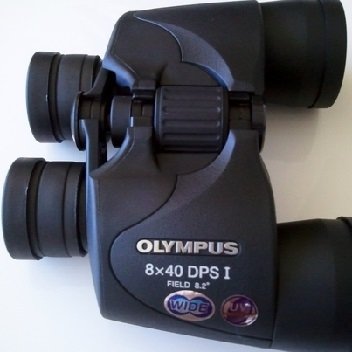
Other interesting features are worth highlighting. These binoculars are notably equipped with a large central focus knob that ensures easy focus adjustment in seconds. Likewise, they feature UV protection and a built-in diopter correction adjuster, which can be used to manually adjust the field of view for each eye.
However, it tends to lose focus slightly when zoomed in or out to the maximum extent, necessitating a refocusing adjustment. Also, the exterior of the anchor points is in good condition, but the slot appears unfinished and has a rough texture.
Pros
- Easy to use and hold with excellent design
- Coated lenses and prisms ensure a clear field of view
- UV protection
- Built-in diopter correction adjuster
- Large, easy-to-use center focus knob
- Durable body
Cons
- Slightly heavyweight
7. Bushnell Binoculars 10×25 H20
Specifications:
- Weight: 290g
- Prism type: Bak-4 glass roof prism
- Lens coating: Multi-coated coating
- Actual/perceived field of view at 1000m: 6.6°/ 114 at 1000m
- Objective lens diameter: 25 mm
- Pupil exit diameter: 2.5 mm
- Magnification (digital zoom): 10
- Minimum focusing distance: 4.6 m
- Optical zoom: 10x
- Twilight factor: 15.8
- Light intensity: 6.25
- Waterproof: not
- Adaptable tripod: yes
If you’re looking for affordable binoculars for hiking that will give you crisp, clear views even in adverse weather conditions, the Bushnell 10×25 H20 should be among your options. Their waterproof and fog-proof design ensures honorable optical performance to enhance your adventures on the water or outdoors.
They sport a protective rubber coating that provides a good gripping surface that will prevent your hands from slipping even in wet and cold conditions. Plus, their interiors are purged with nitrogen to rid the body of any moisture, and the O-rings are sealed to keep moisture out. So you don’t have to worry about observing in high humidity or getting caught in the rain.
We recommend these binoculars not only for their excellent weather protection but also ability to provide sharp, clear views. Thanks to the multi-layer anti-reflective coating, the lenses have been coated to reduce light loss and improve contrast. Their Bak-4 roof prisms provide improved clarity and brightness.
Moreover, the Bushnell 10×25 H20 has an objective diameter of 25 mm and a magnification of 10x. As for their apparent viewing angle, it is 6.6° while the eye relief is 12 mm.
Finally, these binoculars include twisted eyecups that guarantee a comfortable viewing distance even when wearing glasses or contact lenses. Overall, these compact and lightweight binoculars are valuable hiking and travel partners.
Pros
- Textured rubber frame
- Soft ridges to maintain grip
- Compact size with a double-hinged bridge
- Nitrogen filled for fogproof and waterproof performance
- Cheap price
Cons
- The cover is a little too small and no cap for the lenses
8. Olympus 10×21 DPC-I Sporty
Specifications:
- Weight: 170 g
- Prism type: Porro prism
- Lens coating: single-layer coating
- Actual/perceived field of view at 1000 m: 5°/ 87 at 1000 m
- Objective lens diameter: 21 mm
- Pupil exit diameter: 2.1 mm
- Magnification (digital zoom): 10
- Minimum focusing distance: 2.2 m
- Optical zoom: 10x
- Twilight factor: 14.5
- Light intensity: 4.41
- Waterproof: no
- Adaptable tripod: no
Olympus 10×21 DPC-I might be all you need for your next hiking or just plain adventures to watch sporting events of all kinds. These binoculars are designed to a compact and ultra-lightweight (170 g only). You will therefore have no reason to leave them at home, as they are discreet and slip easily into a pocket.
However, we don’t recommend this model just for its excellent portability, its sporty design is especially appreciated to make you see things the way they are meant to be seen.
This model is made from special optical materials that protect against harmful UV rays. They combine coated aspherical lenses and Porro prisms to ensure detailed observations of distant subjects. The 21mm objective lenses feature an anti-reflective coating to reduce glare and improve light transmission, contrast, and color fidelity.
It has a strong 10x magnifying power, but you have the option to personalize the viewing experience thanks to the integrated dioptic correction which allows you to adjust the sharpness. The focus is adjusted quickly and easily via a large central low-profile wheel.
While it may not offer the advanced features found in deluxe binoculars, it still provides excellent value for your money. The order includes a case, neck strap, and lens caps.
Pros
- Compact and lightweight design
- Easy to store and transport
- Ultraviolet (UV) Protection
- Fully anti-reflective coated optics
- Case, neck strap and lens caps included
Cons
- Basic features
- Classic design
9. Vortex Optics Diamondback HD
Specifications:
- Weight: 272 g
- Prism type: HD Roof Prism
- Lens treatment: Fully multi-coated coating
- Actual/perceived field of view at 1000 m: 87 at 1000 m
- Objective lens diameter: 32 mm
- Exit diameter of pupil: NC
- Magnification (digital zoom): 10
- Minimum focusing distance: NC
- Optical zoom: 10x
- Twilight index: NC
- Light intensity: NC
- Waterproof: yes
- Adaptable tripod: yes
If you are on a tight budget and looking for the perfect binoculars for nature and wildlife viewing, the Vortex Optics Diamondback HD is one of the best options available to you.
These compact and lightweight binoculars use large (32mm) lenses and state-of-the-art optical coatings to deliver super-bright images, so you can get the most out of your mountain treks. Its field of vision of 87 m at a distance of 1000 m ensures the observation of a large area of the terrain.
The combination of high-quality HD glass roof prisms and lenses with fully multi-coated treatment guarantees optimum brightness while the high magnification power makes objects appear 10 times closer. However, there’s a slight chromatic aberration in strong backlighting, but it’s really quite minimal.
As you will have understood, these binoculars offer more than decent optical performance for their price. You even have the possibility of personalizing the viewing experience by adjusting the sharpness of the image using the central focusing ring and the one dedicated to diopter adjustment.
If you wear glasses, you will be reassured to know that this is not incompatible with the use of the Diamondback HD: they indeed include retractable rubber eyecups that you just have to fold down to be able to stick your glasses to the lenses without risk of damaging them.
Moreover, this device is very comfortable to use. Thanks to their fully multi-coating, which offers excellent grip to ensure good resistance against shocks. Finally, this model comes with a neck strap and a polyester cover: these accessories facilitate their transport and protect them from shocks and dust.
Pros
- Good quality images with the ability to adjust sharpness
- Compact and lightweight
- Very robust design
- Excellent value for the money
- Very good grip and feeling of comfort
- Strong magnifying power
Cons
- A little stiff to adjust
10. Bushnell PowerView 12×25 Binoculars
Specifications:
- Weight: 320g
- Prism type: Bak-7 glass roof prism
- Lens treatment: All surfaces
- Actual/perceived field of view at 1000m: 4.6°/ 80 at 1000m
- Objective lens diameter: 25 mm
- Pupil exit diameter: 2.1 mm
- Magnification (digital zoom): 10
- Minimum focusing distance: 7.6 m
- Optical zoom: 12x
- Twilight factor: 17.3
- Light intensity: 4.33
- Waterproof: not
- Adaptable tripod: no
Finally, in our top 10 list of the best binoculars for hiking, we have the Bushnell PowerView 12×25. If the budget is primary consideration to you, the PowerView 12×25 is an option you should seriously consider. Apart from their affordable price, we recommend these binoculars as they might be just the thing for beginners or kids.
This model features a compact and lightweight design and offers powerful magnification (12x), as well as a wide field of view (4.6°/ 80 to 1000 m). These specifications make it a partner of choice for observing wildlife or nature but also for fully enjoying concerts and other sporting events.
Like their counterparts in the popular Bushnell Powerview series, this model uses fully coated optics to deliver bright and vivid images. Their 25 mm diameter objective lenses are indeed coated, which promotes excellent light transmission. The 12x optical zoom function reveals sharp details in distant objects.
They show signs of durability with their rubber grip armor that absorbs shock while providing a firm grip. Drops from moderate heights should therefore not get the better of these binoculars. They are also small and light enough to slip into a jacket pocket.
However, the brightness is a little low but enough for occasional use such as hiking or camping.
Pros
- Compact and lightweight design
- Excellent value
- Strong magnifying power
- Good choice for beginners or children
Cons
- Improvable stability
Best Hiking Binoculars Buyer’s Guide
Here’s a breakdown of key factors to consider when choosing binoculars specifically for hiking:
Choose According to Your Use
For hiking, versatile binoculars are recommended and a large field is appreciable. To observe subjects in detail, it is necessary to favor binoculars equipped with excellent optics, good magnification and fast focusing.
Avoid going over 10x magnification which could make your binoculars unstable in use. To observe birds at dusk, choose a model with a twilight index close to or greater than 20. A rubber coating will be ideal against falls as well as rubber protection for the eyes.
There are compact and easy-to-learn models specially designed for children. Models equipped with 8x magnification and a 21mm lens are sufficient to introduce them to observation.
Type of Prism
Binoculars operate using a prism system, which allows users to observe captured images without inverting them. There are two main types of prisms:
- Porro prism: This design, although relatively old, is still used in high-magnification binoculars that are often priced attractively. However, this design can result in less solidity and luminosity because the light path is less direct.
- Roof prism: This type of prism offers a more direct and thus brighter light path. Additionally, binoculars with a roof prism design tend to have reduced dimensions while maintaining excellent sealing and reliability.
Quality of the Lenses
The type of glass used in binoculars significantly impacts the quality of the images produced. There are two main types of lenses used in binoculars:
- BK-7 borosilicate glass: This type of glass is commonly used in many binocular models due to its lower cost while still providing satisfactory image quality.
- BaK-4 barium glass: Binoculars with BaK-4 lenses offer superior image quality performance, albeit at a higher price point compared to BK-7 lenses.
To ensure good contrast and sharpness in the images, manufacturers apply various coatings to the lenses of binoculars. These coatings include:
- Fully multicoated
- Multicoated
- Fully coated
- Coated
Magnification
On all pairs of binoculars, some indications correspond to the performance of the devices. We can find different binoculars, highlighting technical sheets where we will find mentions of 10 x 50 or 12 x 30. The first number of this technical information will indicate the magnification coefficient of the binoculars, which we could assimilate to “zoom”. A pair of 10 x 50 binoculars will allow you to view a subject or an object 10 times closer.
For hiking, a moderate magnification of 8x or 10x is ideal. Higher magnification might be tempting, but it can make images shaky and reduce the field of view (the area you can see at once).
The Lens Diameter
The diameter of the objective lens is indicated by the second number that follows the magnification on the datasheet of binoculars. Specifically, it represents the diameter of the front lens of the binoculars, expressed in millimeters. This measurement is crucial as it determines the quality of the image produced. Objective lenses function similarly to camera lenses: light enters through the lens, and the amount of light directly impacts the clarity of the image.
Understanding the value of lens size is crucial based on your intended use. If you plan to hike in areas with low light conditions, larger lenses will be beneficial for better light gathering. However, larger-diameter lenses will increase the weight and size of the binoculars. Therefore, opting for binoculars with large lenses may not be ideal if you primarily plan to use them in well-lit environments during daylight hours.
The Diameter of the Eye Circle (Exit Pupil)
The eye circle, akin to a camera’s diaphragm, is the small circle of light observed at the back of binoculars. It is calculated by dividing the lens diameter by the magnification factor which ranges from 2 to 7 millimeters. This measurement determines how much light can be captured and directly affects viewing comfort. To optimize comfort, the eye circle diameter should be similar to your pupil diameter, which varies based on age and lighting conditions.
The Twilight Index and the Luminosity Index
The Twilight Index and the Luminosity Index are essential factors in choosing binoculars for different lighting conditions.
The Luminosity Index is calculated by squaring the diameter of the exit pupil. For instance, for 10×50 binoculars, the luminosity index would be (50/10)², or 25. A higher luminosity index indicates better light absorption, making binoculars more effective in low-light conditions. Therefore, binoculars like 5×50 would absorb more light than 10×50 due to their higher luminosity index (50 vs. 25).
On the other hand, the Twilight Index measures binoculars’ effectiveness in low-light conditions and is calculated by taking the square root of the magnification factor multiplied by the objective diameter. For example, 8×42 binoculars would have a twilight index of 18.33.
The Field of Vision
The field of view of binoculars refers to the width of the landscape observable through them at a distance of 1000 meters. It’s typically expressed in degrees or meters and is directly related to the magnification factor. Higher magnification reduces the field of view.
To calculate the field of view, multiply the magnification factor by the field width value. If the result is greater than 64, it indicates wide-angle binoculars. For instance, 10×50 binoculars with a 7° field of view would have a calculated field of view of 70.
The Focusing System
Focusing in binoculars involves adjusting the sharpness of the observed image to clearly visualize a subject. There are two types of focusing mechanisms in binoculars:
- Central focus: This is typically done using a wheel or button located between the two barrels of the binoculars. It allows for quick and easy adjustment of focus for both eyes simultaneously.
- Individual focus: This type of focusing is commonly found in binocular models designed for water sports or marine use. Each eyepiece has its own focus adjustment, allowing users to fine-tune focus independently for each eye.
Additional Features
For difficult and humid weather conditions, make sure the device is waterproof. This also ensures robustness which prevents entering water and fog into the optics. In the same way, if you want to use your binoculars in a difficult situation or a Hostile Environment, choose models with rubber-coated. This can limit breakage in the event of falls or shocks.
Finally, Eye Relief is important if you wear glasses. There are removable eyecups that can be adapted to binoculars. This will allow you to use the binoculars even with your glasses.
Preferred Brands and Manufacturers
There are options available at various price points based on their features and manufacturing quality. For top-of-the-range and more specialized models, brands like Nikon, Vortex Optics, Bushnell, Pentax, and Steiner stand out as leaders in the field of optical devices. These brands are known for offering the best quality and performance in binoculars, making them reliable choices for enthusiasts and professionals alike.
The Prices
The price of binoculars is indeed influenced by their technical specifications. Entry-level models can typically be found for around $100, while high-end and professional-grade models may exceed $1000 or even $1500. For good quality entry-level binoculars that prioritize excellent optical performance and refined manufacturing, you can expect to pay around $500.
FAQs
Which pair of binoculars should I choose if I wear glasses?
For users who wear glasses, make sure to choose models equipped with eye relief greater than 15mm. If this information is missing from the data sheet of the binoculars you are interested in, check that the manufacturer offers eyecups adaptable to the binoculars that will allow them to be used even with your glasses.
What is the ideal objective lens diameter for hiking binoculars?
Objective lens diameters of around 32mm to 42mm are popular choices for hiking binoculars. These sizes balance light-gathering ability with portability.
What quality of glass should be favored for binoculars?
There are two types of glasses for binoculars on the market: binoculars equipped with BK-7 boron glasses will be less expensive while offering very satisfactory image quality while BaK-4 barium glasses will be more expensive but will offer superior image quality. As for the coating of the lenses, we advise you to opt for a fully multicoated or multicoated coating while going your way for the untreated binoculars of a coating.
Are image-stabilized binoculars worth the investment for hiking?
Image-stabilized binoculars can be a valuable addition if you often find yourself in situations where a steady view is essential. They’re particularly useful for detailed observation or birdwatching.
Which binoculars are for versatile use?
For versatile use, choose compact and lightweight binoculars that offer satisfactory image quality across various applications. Avoid excessively high magnification levels as they can be challenging to use without a tripod. Opt for binoculars with an easy-to-use focusing system for convenience. Specialized models may not be the best choice as they might be less portable.
Conclusion
The gear you pack for hiking is crucial, and having the right binoculars can greatly enhance your outdoor experience. With a wide range of options available, each catering to specific preferences and requirements. Whether you prioritize close-up views, portability, or affordability, there’s a pair of binoculars out there that will meet your needs perfectly.
So, get prepared for your next adventure and explore the world in a whole new way with the ideal pair of binoculars by your side.
Happy hiking!
Read Also…
